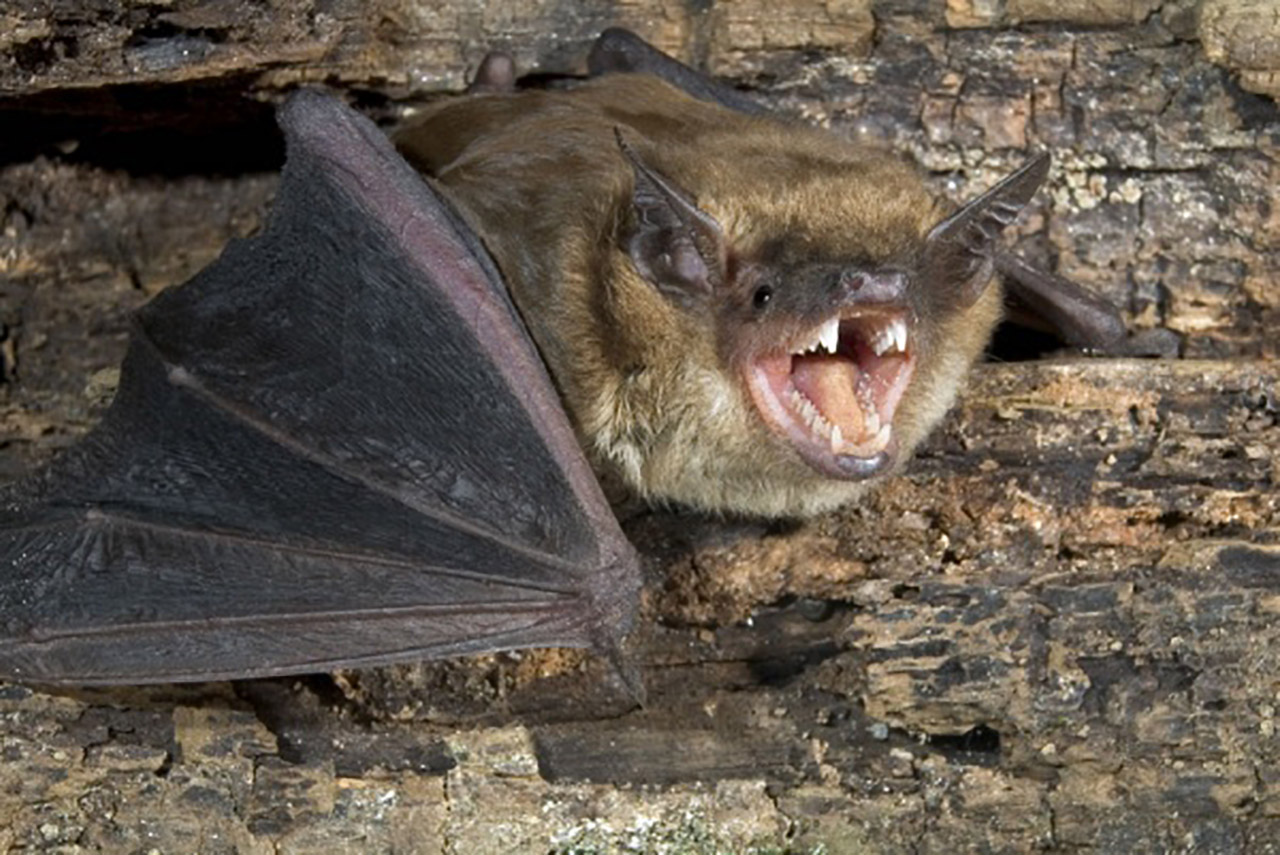Big Brown Bat Facts

Big brown bats are found across North America. These flying mammals mate in the fall and give birth to one or two pups between May and July.
Big brown bats have been known to live as long as 19 years. They are most active at night as they hunt for insects to eat. Big brown bats use echolocation. Able to bounce sound off of objects, big brown bats use echolocation to communicate and find prey.
Big Brown Bat Bites
There are a lot of myths that surround bats, but rabies, unfortunately, is not one of them. Rabies is a virus that is spread through the saliva of an infected animal and can affect the victim’s nervous system.
You may be able to spot an infected bat if you see one flying around during the day or crawling around on the ground. While these signs don’t always mean that the bat has rabies, it doesn’t hurt to use caution and avoid it.
If you’re bitten or scratched by a bat and start to experience flu-like symptoms, you’ll want to immediately contact a medical professional.
Big Brown Bat Infestation
You may have a bat infestation if you notice the critters flying around your home at dawn or dusk. You might also hear squeaking or scurrying noises coming from your attic or walls.
Brown stains on the siding of your home could be from bat droppings and urine. A strong smell of ammonia is an indicator that there could be a large accumulation of bat droppings, called guano, in your home.
Although these bats probably aren’t on your guest list, they’re actually great for the environment. Big brown bats are insectivorous, meaning they feed on only insects. Big brown bats can get rid of a lot of annoying bugs around your home like flies and mosquitoes.
However, big brown bats can carry infectious diseases like rabies and an accumulation of bat droppings can cause structural damage to your home. Such affects are unsafe for everyone on the property.
Since bats are so important to the environment, many pest management companies use carefully timed practices to make sure that the bats and their young are safely excluded from your home.
Types of Big Brown Bats
Big Brown Bat Identification
Big brown bats are about 4 to 5 inches long with a 12 to 14-inch wingspan. They are hairy and can range in color from light to dark brown depending on where they live. Big brown bats in a desert habitat are a lighter brown while those that live in more forested areas tend to be darker. Big brown bat wings are black and furless.
Big Brown Bats in the House & Attic
You can find big brown bats hiding in places that are warm and dry, so your attic or crawl space may be the perfect place for them.
They will also roost in garages, soffits, under shingles, walls, behind siding, or in chimneys. Any crack or opening in your home can serve as an entry point for these critters. If your home is infested with big brown bats, it is at risk for structural damage. And as big brown bats can carry diseases, this puts you and your family in danger.
Big brown bats may also invite other pests inside to join the party, too. If a bat is in your home, their droppings can wreck insulation and sheetrock, which can be costly to replace. As far as diseases go, bat droppings or guano is known to carry spores that results in the growth of a fungus called Histoplasma. This fungus can cause lung disease in humans.
The most commonplace and concerning disease, however, is rabies. While rare, bats can spread rabies to victims by biting them. If you’re ever bitten by a big brown bat, you should seek medical attention immediately.
Frequently Asked Questions
Do big brown bats bite?
Big brown bats will bite humans if they feel threatened, are provoked, or are sick. While these bats are not aggressive creatures, they are better left alone.
What do big brown bat bites look like?
Big brown bats have sharp, but very tiny teeth. Their bite marks often look less like a “bite” and more like a scratch. Sometimes their bites can break skin, but it is usually nothing more than a little puncture.
What are the benefits of professional big brown bat pest control?
A pest management professional has the expertise, equipment, and skills necessary to effectively address a big brown bat problem.
Finding and treating a big brown bat infestation can be challenging, especially if they are spread throughout your yard.
A pest management professional is able to identify the pest problem and determine the best possible method to resolve the big brown bat infestation.
If your property faces an invasion of big brown bats or other wildlife nuisances, contact us today. Our experienced pest control technicians can humanely but effectively remove the pests from the premises.


